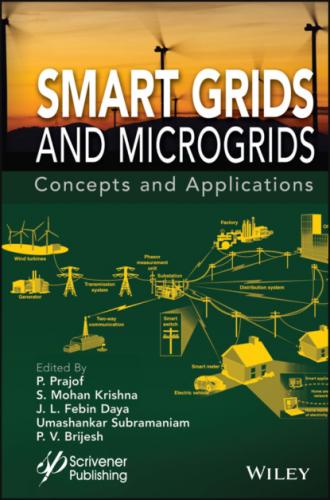3. Electro-chemical storage: An electrochemical energy storage system or Batteries energy storage system is a set of series and parallel connected low-voltage/power battery cells to attain a required electrical characteristic. Each fundamental cell contains electrolyte (liquid, paste or solid) along with anode and cathode, which experience reversible chemical reactions under charging and discharging mode of operation. The power rating of the battery depends on the reaction surface area of the electrolyte and electrodes [9]. Some of the benefits of BESS are:Quick response time.Ease of commercial availability.Minor self-discharge loss.Established technology.High power and energy densities.
The types of BESS are as follows:a. Lead-acid Battery: The lead-acid battery is the most extensively used rechargeable battery for 100 years. Each cell of the battery consists of a lead dioxide (PbO2) anode, lead sponge cathode and solution of sulphuric acid as an electrolyte. Lead-acid battery cells of 2V are attached in series to achieve a high voltage. Due to the chemical reaction, electricity is generated between the anode and the cathode while discharging. If the voltage is applied across electrodes, the battery gets charged with a reverse reaction. This property makes the Lead-acid battery rechargeable and suitable for many applications. Benefits of lead-acid batteries are low cost, easy installation, high efficiencies, longer holding of stored charge, easy to recycle, and good surge capability. It also suffers from some disadvantages such as maintenance requirement for the liquid electrolyte and electrode corrosion, lower specific power, premature failure under partial discharging operation and risk to the environment due to poisonous metal.b. Lithium-Ion Batteries: It has enormous usage in portable electronic devices and the transportation sector due to the lightweight decent power density and quick response. Each cell of a lithium ion battery has 3.7 V made of a layer of lithium compound anode, a layer of graphite cathode behavior, and the third layer of insulator material is placed in-between. The operation of a lithium-ion battery resembles the capacitor. Lithium-ion has a very low self-discharge rate, high discharge/charge rate and high efficiency. The disadvantage is that lithium is a thermal runaway, instability at high operating temperatures, expensive.c. Nickel-based batteries: Nickel-based battery was introduced with nickel-cadmium (Ni-Cd). The cell of a nickel-based battery consists of nickel anode, cadmium cathode and alkaline electrolytes. Some of the advantages are fast discharging cycles, low cost/cycle, longer life, suitability for renewable applications. Nickel-cadmium battery suffers from toxicity problem caused by cadmium; hence nickel-metal-hydride (NiMH) battery was introduced to solve this problem. Nickel-metal-hydride (NiMH) battery has advantages such as mild toxins content and wide temperature range. It has few evident limitations like the need of a complex charging algorithm, sensitive to overcharge, heating during fast charging and high-load discharge and high self-discharge. A nickel-iron (Ni-Fe) battery was introduced to substitute the cadmium with iron. This battery (Ni-Fe) uses a nickel (III) hydroxide cathode, an iron anode with potassium hydroxide as an electrolyte that generates a nominal cell voltage of 1.20V. Nickel-iron (Ni-Fe) battery has a large service life, rugged construction, lower self-discharge and less affected by over- and undercharging. Like nickel-cadmium, a nickel-zinc battery was introduced that uses a nickel electrode and an alkaline electrolyte, but the Ni-Zn battery provides 1.65V/cell. Several advantages such as low cost, high power output, no heavy toxic materials and decent temperature operating range have made this attractive. At the same time, it also has some limitations as a brief life cycle and high self-discharge.d. Redox-Flow Battery: The redox (reduction-oxidation) cell is a rechargeable fuel cell that reversibly converts chemical energy to electricity by streaming an electrolyte with dissolved electroactive elements through an electrochemical cell. The advantages of a redox-flow battery include a longer lifespan of approximately 40 years and extendible capability by just increasing the number of tanks with additional electrolytes.
The pumped hydro storage is nearly 95.5% of the entire worldwide capacity of ESS, as shown in Figure 2.1 [5].
Figure 2.1 Distribution of worldwide operational ESS.
2.3.2 Comparison of Storage Technologies
As stated in the previous section that different types of storage technologies are available, a comparison of different technology is provided in Table 2.2. The selection of ESS (Energy Storage Systems) depends on the need and application.
2.4 Power Electronics Converter in Microgrid
Power electronics technology is expanding progressively with the development of various power converters. These converters allow the charging and discharging procedure of ESS, the interconnection of buses, power quality enhancement, etc., [10]. Power converters, including DC-DC converters, AC-DC rectifiers, DC-AC inverters, and AC-AC converters, are discussed briefly.
2.4.1 DC-DC Converter
DC-DC converters is a power electronic circuit that converts the DC source’s voltage level to the desired DC output voltage level. DC-DC converters are primarily categorized into three types such as step-down (buck) converter, step-up (boost) converter, and bidirectional DC-DC converter. A step-down converter provides lower voltage output than the input source voltage, whereas a step-up converter raises the DC source voltage to a higher output voltage. The bidirectional DC-DC converter operates in both step-down and step-up modes of conversion with a bidirectional power flow. The DC-DC converter is used for the MPPT operation of photovoltaic (PV) microgrid and the association of the BESS to the DC link of the grid.
Table 2.2 Comparison of physical characteristics for various kinds of energy storage [5, 15].
| ESS | Power (MW) | Energy density (Wh/kg) | Power density (W/kg) | Discharge time | Response time | Efficiency (%) | Capital cost ($/kWh) | Life-time (years) | Cycling times |
| PHS | 100 - 5000 | 0.5 - 1.5 | - | 1 - 24 hr. | Minutes | 70-80 | 5 - 100 | > 50 | > 15,000 |
|
|
